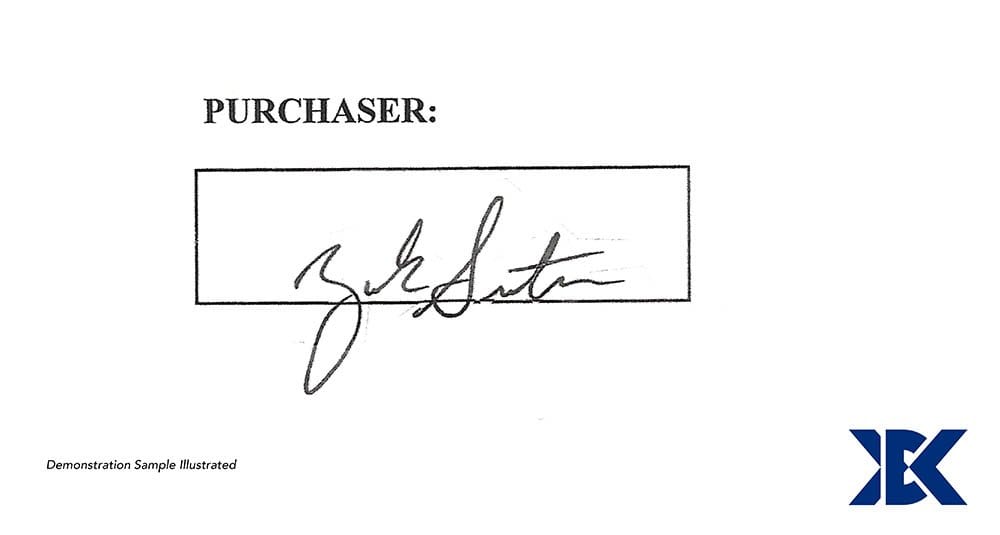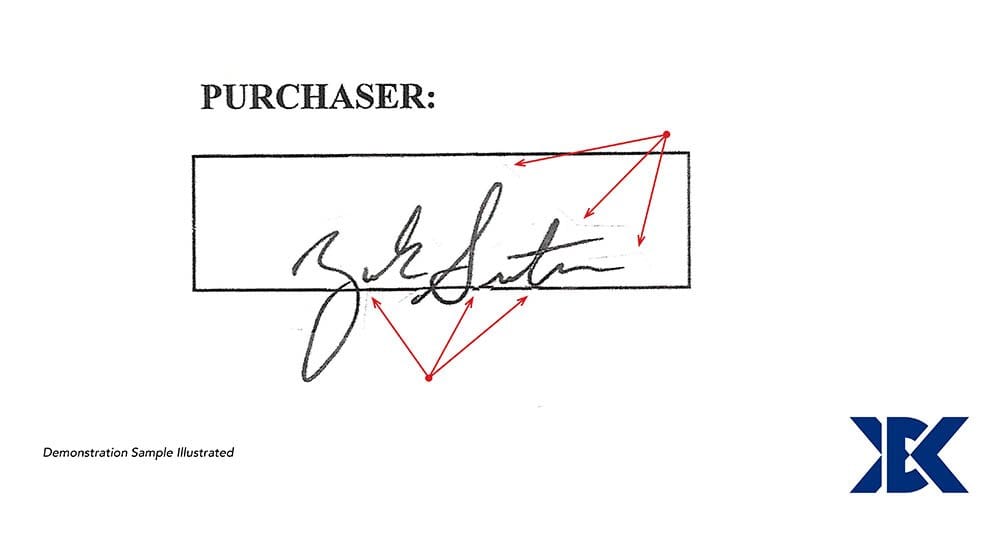What happens when your client’s signature appears on a document they claim they didn’t sign? When examining a copy of a questioned document, a Forensic Document Examiner looks critically not only at the signature, but the entirety of the document for evidence of alterations and/or manipulations. Take for example the below enlargement of a signature block.

For this demonstration, the signature in this case can be assumed to have fallen within the Range of Variation of the known writer. When looking critically at this signature, it was noted that the signature was written using the bottom of the block as a baseline. Looking closer, you will note that the baseline does not match up evenly wherever the signature touches the block. Furthermore, you will note additional lines around the signature itself. All of these features, illustrated below, are characteristics of a cut and paste manipulation in which a genuine signature was taken from one document and placed onto the questioned document.

When the questioned document in your case is a copy, it is critical that you work with a qualified Forensic Document Examiner to determine what the evidence means. Evidence such as this, when documented thoroughly by a Forensic Document Examiner, is difficult to dispute in court and frequently leads to saving both time and money through settlement.
If you have a case involving a potential cut and paste manipulation, contact us for more information on how we can assist your case.
